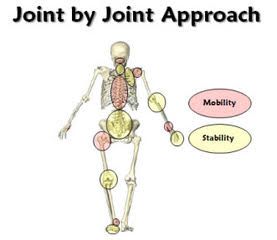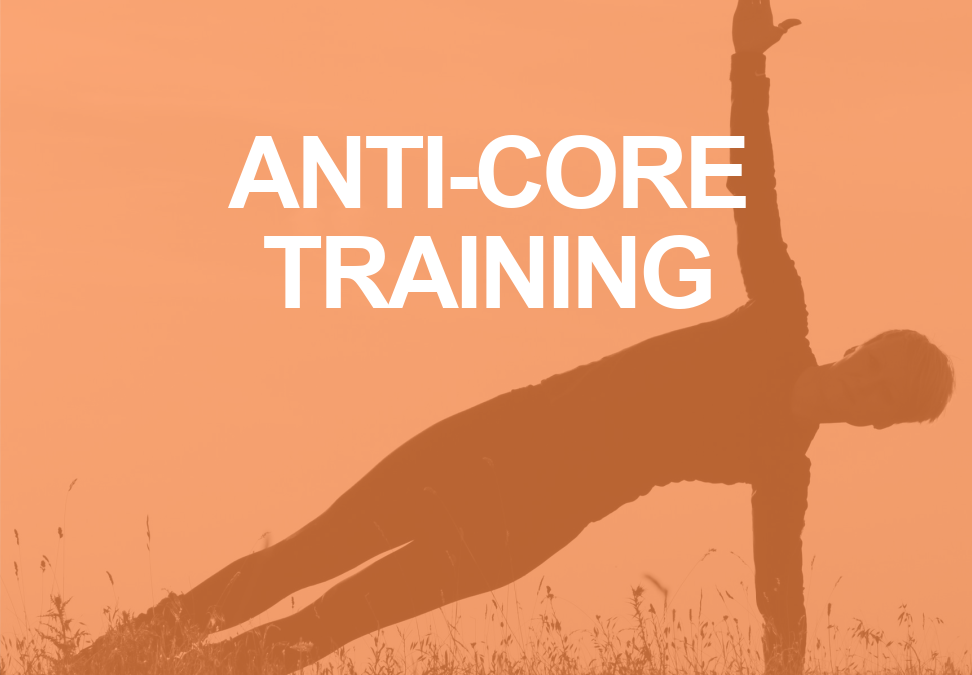Anti-core training may not only help you but also your clients improve spinal stability and athletic performance. In order to better understand the concept of the core, let’s first define what is core training is and identify the components of the core.
Core training can be broken down into two categories. The first is the traditional form of core training that most people are familiar with including crunches, rounded back sit-ups, side bends, and Russian twists. These movements are accomplished with spinal flexion, extension, lateral flexion, and rotation. This has been the way it’s been done since “always.”
The second category or on the opposite spectrum is anti-core training. Anti-core training does the opposite of traditional core training— prevents movement. No spinal flexion, no back extension, no side bending, no rotation through the spine.
Musculature of the Core
The core is made up of far more muscles than the “6 pack” or rectus abdominis. The participating muscles of the core include that provide both spinal stability and core strength include:
- transverse abdominis
- multifidus
- internal obliques/external obliques
- erector spinae
- diaphragm
- quadratus lumborum
- pelvic floor muscles
- iliopsoas
- rectus abdominis
- latissimus dorsi
- trapezius
- gluteals
All of these muscles have their own unique functions but they all work together to support and stabilize the spine.
Why Spinal Movement Can Be “Bad”
 Strength and conditioning expert, Mike Boyle and Physical Therapist, Grey Cook developed a theory called “the joint by joint approach”: the body is made up of mobile “segments” and stable “segments” that alternate as you move up the body starting from the ground such that the mobile segments can gain leverage from the stable segments to effectively produce force.
Strength and conditioning expert, Mike Boyle and Physical Therapist, Grey Cook developed a theory called “the joint by joint approach”: the body is made up of mobile “segments” and stable “segments” that alternate as you move up the body starting from the ground such that the mobile segments can gain leverage from the stable segments to effectively produce force.
Injuries relate closely to proper joint function, or more appropriately, to joint dysfunction. Said another way, the joints alternate between mobility and stability; ankles need mobility, knees need stability, continuing up the chain and when you train accordingly based on the joints and how they should function, you reduce injuries. Notice in the picture that the lower back should create stability and not mobility.
A world-renowned expert in lower back disorders, Stuart McGill has researched extensively on looking at tissue stresses and repeated back patterns such as doing crunches. Through his tests at his Spine Biomechanics Lab, he found that crunches and rounded back sit-ups place 3,300 newtons (the equivalent of 750 pounds of compressive force on the spine when bent in flexion.
With this amount of force, you can expect disc bulges that press on nerves, leading to back pain and potentially a herniated disc with a large segment of the population. Dr. Stuart McGill has compared doing crunches to flexing a credit card, eventually it breaks. In his professional opinion, we all have a set number of spinal flexions before damage occurs; it’s not a question about “if” but “when”.
Anti-Core Training is Real Core Training
Lower back safety and injury prevention are what real core training is all about. The major role of the core musculature is to function in concert to stabilize the lower back. The rectus abdominis and glutes do not work in isolation; this is the reason that traditional core exercises like crunches are not actually functional. Core training should really be about motion prevention, not motion creation.
The functions behind anti-core training are:
- To keep the spine safe and stable while the limbs are moving.
- To transfer energy from the lower body to the upper body.
Types of Anti-Core training
While the motions of the spine do have their place in movement and athletics, they cannot be adequately trained without a foundational anti-movement strength. There are three main types of anti-core training. As you progress the movements, you will notice a combination of the different types. Here’s a breakdown of the three types:
1.) Anti-Extension: The word extension is referring to spinal extension. When your back arches backward, this is “extension”. An example would be doing a pushup and your hips start sagging or dipping forward rather than staying in neutral spinal alignment. The goal of anti-extension exercises is to brace your core to prevent overarching. Anti-extension exercises include:
Bodysaw (advanced plank progression)
2.) Anti-Rotation: These exercises help to strengthen the hips and the core to resist rotational forces to protect the spine. For athletes, rotational forces are very important to maximize their power, however they must be able to control or prevent these movements as well. Most rotation should actually happen from the hips and not the back.
Bird dogs
3.) Anti-Lateral Flexion: Train the spine to resist bending to the side. While rotation, flexion, and extension are movements that we may see in sports and everyday life, lateral flexion is rarely safe or efficient. The obliques act to resist motion and maintain a proper hip and core position and do not respond well to side crunches or bending. Here are Anti-Lateral Flexion exercises
Side Plank
Suitcase Carry (essentially, a one-sided Farmer’s walk)
Ways to progress anti-core training exercises
Anti-core training can be adapted to the individual. Just as another form of exercise you will want to continuously challenge your body and over time progress to greater challenges. You can add more difficulty to anti-core training exercises by changing the base of support (wider base is easier, narrow base in harder), adding more load, varying the speed of the repetition, taking away a point of contact, and moving from static positions such as being on the floor to standing and incorporating movement.
Regardless of how you progress the exercise, you will always want to maintain the integrity of the lower back by contracting the abdominal muscles, maintaining a neutral spine, especially in the lower lumbar region.
It’s All Connected
The core works together and not in isolation. Doing repetitive rounding of the lower back is been shown to cause harm, instead, opt for anti-core training exercises that promote back health and performance. Just because it’s always been done a certain way doesn’t mean its good for you. Train the body in harmony and reach higher levels of performance whether your clients are athletes or just trying to remain inury-free and strong.
Check out our Core Training specialty certification to add to your professional toolbox!
References
Boyle, M., Verstegen, M., & Cosgrove, A. (2010). Advances in functional training : training techniques for coaches, personal trainers and athletes. On Target Publications.
www.stack.com/a/why-anti-movements-are-an-athletes-key-to-functional-core-strength/
uwaterloo.ca/health/hes-got-our-backs
www.ifittraining.co.uk/insights/joint-by-joint-approach-part-1/
Grenier, S. G., & McGill, S. M. (2007). Quantification of Lumbar Stability by Using 2 Different Abdominal Activation Strategies. Archives of Physical Medicine and Rehabilitation, 88(1), 54–62. https://doi.org/10.1016/j.apmr.2006.10.014


